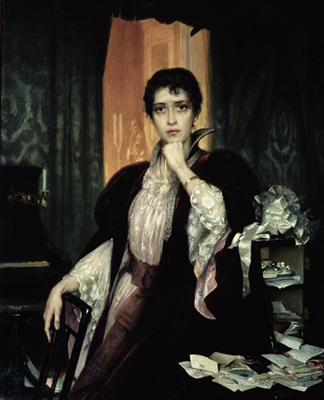Published 12/09/2012

In the late 19th century, Russia was undergoing an identity crisis. There was an undercurrent of intense intellectual debate about the direction of Russia's future: modernise and aspire to the sophistication embraced by its Western neighbors, or step back in time to a social fabric based on ancient (and idealized) communal villages. Although Russia had cemented its role as a European power with Alexander I's epic defeat of Napoleon in 1812, Russia had yet to catch up to its European neighbors economically and socially. The majority of the population were poor peasants, with the wealth concentrated amongst a few wealthy nobles. The emancipation of the serfs in 1861 had done much to even the playing field, and a burgeoning middle class entered the scene alongside advances in industry. But Russia continued to be a society of the priviledged few lording over everyone else. In the last years of the 19th century, revolt was rumbling just under the surface and would continue until the Bolshevik Revolution in 1917. Bridgeman has a wealth of material relating to Anna Karenina's Russia including paintings and photographs of Moscow's and St. Petersburg's grand palaces, decorative arts, textiles, fashion, landscapes, portraits and scenes of daily life of both the bourgeoise and peasantry. View a lightbox of images of 19th century Russia. |
|
| Russian collections available for licensing Bridgeman represents the State Russian Museum, the world's largest collection of Russian fine art. Opened by decree in 1898 by Tsar Nicholas II, and housed in four palaces, the museum boasts over 400,000 objects including 70,000 paintings. Of particular note for the time in which Anna Karenina is set, are idealised 19th century landscapes by Isaak Ilyich Levitan. Founded in 1856, Moscow's Tretyakov Gallery is a treasure of material from Andrei Rublev's Trinity to Wassily Kandinsky's Composition No.7. Pavel Tretyakov, the gallery's founder, wanted to build a portrait series of contemporary Russian writers, artists and composers for his collection. Leo Tolstoy was at the top of his list but it took artist Ivan N. Kramskoy four years to convince the writer to let him paint his portrait. Check out Kramskoy's resulting portrait of Tolstoy. |
For a taste of Imperial Russia, check out gilded adornments from the Kremlin Museums, Moscow.
Bridgeman also has 19th century Russian textiles in the archive, many of which are from the collections of The Design Library, New York.
For post-revolution Russia art, the Gamborg Collection specializes in 20th century Soviet art including textile and fashion design, graphic design, Russian avant-garde, Socialist realism and murals. Also check out our feature on 20th century Soviet art, including Constructivism and Socialist realism with works from various collections in the Bridgeman archive.
Other collections include two from the Ukraine, Odessa Fine Arts Museum and Lviv Gallery of Arts




